Running an eCommerce fabric store on Shopify has so much potential. Whether you’re transitioning from a brick-and-mortar shop or starting fresh online, Shopify offers the perfect platform to sell fabric by the yard, meter, or custom measurements. This guide walks you through everything you need to know to launch and scale your online fabric business.
Why Selling Fabric Online Is a Smart Business Move
The fabric industry is experiencing a digital renaissance. While traditional fabric stores continue to serve local communities, online fabric shops are tapping into global markets and reaching specialized communities that traditional retail simply can’t match.
Meet your customers where they are shopping for your products.
With the surge in sewing, quilting, and crafting popularity across social media platforms, selling fabric on Shopify positions you perfectly to serve customers seeking specialty materials, custom cuts, and convenient shopping experiences they can’t find locally.
Modern fabric sellers need modern tools, and Shopify’s platform lets you offer what today’s crafters demand: custom sizing options, real-time pricing calculators, mobile-friendly browsing, and detailed product specifications—all while maintaining lower overhead than brick-and-mortar shops.
Getting Started: Set Up Your Fabric Store on Shopify
Choose the Right Theme for a Product-Heavy Store
Look for themes specifically designed for product-heavy stores with grid layouts that showcase fabric patterns and textures effectively. Search for themes that offer robust filtering options so customers can quickly sort fabrics by color, weight, material, or price.
Most importantly, prioritize themes with zooming functionality—fabric shoppers need to examine weave details and print scale before purchasing. Mobile responsiveness is also non-negotiable, as many crafters shop for materials while browsing patterns on their phones or tablets.
There are many options to choose from, but here are our recommendations and why these would work best for your fabric stores:
1. Warehouse (by Maestrooo)
Best for: Large catalogs, fabric stores, and stores needing advanced filtering
Why it fits:
- Grid-based layout that can showcase fabric swatches and textures
- Powerful filtering system built-in (color, material, weight, price, etc.)
- High-resolution image zoom on product pages—great for texture and weave details
- Mobile-optimized for seamless browsing on phones and tablets
- Sticky navigation + quick view, making large catalog navigation easier
Bonus: Designed specifically for inventory-heavy stores and often used by hardware, fashion, and fabric retailers.
2. Expanse (by Archetype Themes)
Best for: Visual storytelling with filtering, collections, and zoom features
Why it fits:
- Clean grid-based layout ideal for highlighting fabric patterns
- Robust filter sidebar for color, material, size, and price
- Product image zoom and hover effects for a detailed visual experience
- Optimized for mobile with fast loading and intuitive navigation
Custom promotion banners and collection callouts great for fabric categories (e.g., linen, cotton, seasonal prints)
Add Fabric Products with Images, Swatches, and Descriptions
High-quality product listings are essential when you sell fabric on Shopify—they’re your virtual fabric bolt display. For each fabric, include at least four images: a flat lay showing the full pattern repeat, a draped shot demonstrating how the fabric hangs, a close-up of the texture, and a scale reference with a ruler or common object.
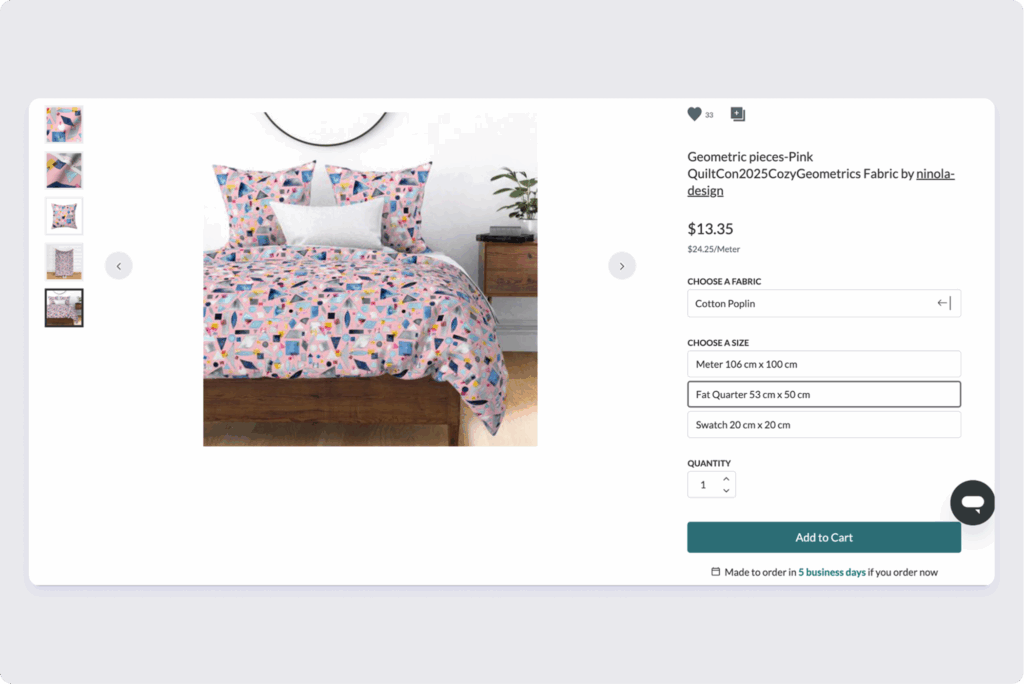
Furthermore, create swatch images showing all colorways available, and consider lifestyle photos of finished projects using your fabric. In your descriptions, include essential specs like fabric content, width, weight (GSM or oz/yard²), care instructions, and recommended uses. Be specific with color descriptions—”sage green with gold metallic accents” is more helpful than simply “green.”
Organize by Type: Cotton, Linen, Jersey, and More
A logical organization system helps customers find exactly what they need in your fabric collection. Create collections based on fabric type (cotton, linen, wool), purpose (apparel, quilting, upholstery), properties (stretch, water-resistant, organic), or designer collections.
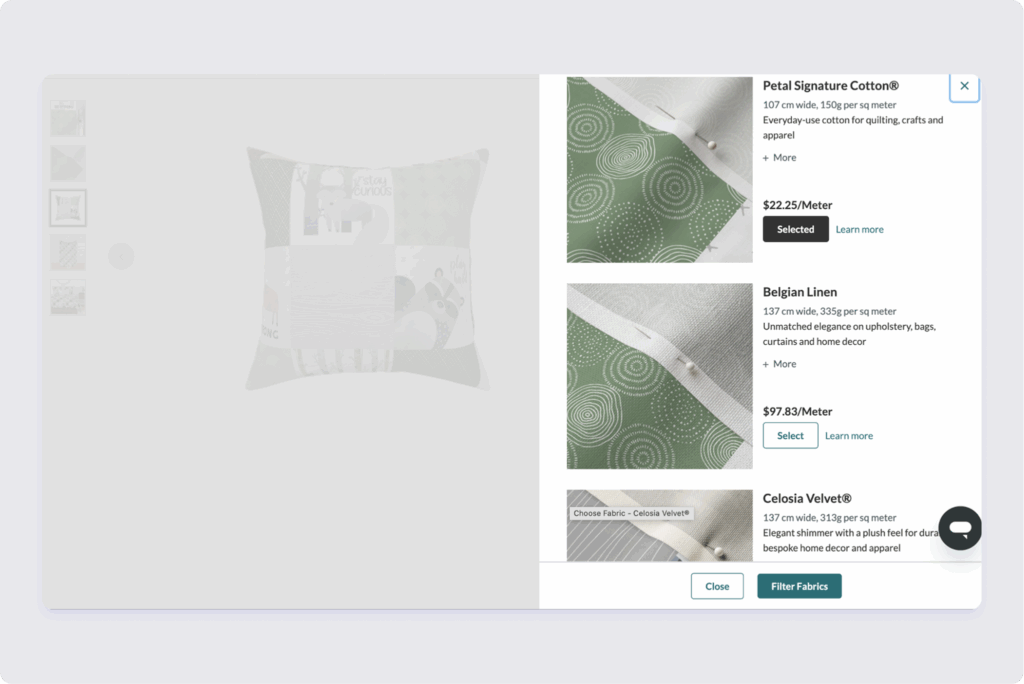
Use consistent tags across your store for powerful filtering options, and consider seasonal collections to highlight fabrics appropriate for upcoming holidays or weather conditions. Don’t forget to create a New Arrivals collection that automatically displays your latest fabrics.
For fabrics that fit multiple categories, use Shopify’s automated collections to ensure they appear in all relevant sections without manual updates.
How to Price and Sell Fabric by the Yard or Meter
Set Pricing by Length with Shopify’s Variants
When selling fabric on Shopify, use product variants to offer standard length options like 1, 2, or 3 yards. Set up variants by creating a “Length” option with corresponding prices—for example, $12 for one yard, $24 for two yards.
Configure inventory tracking for each variant to accurately monitor your fabric stock. While this approach works well for common measurements, it’s limited for stores offering custom-cut fabric lengths.
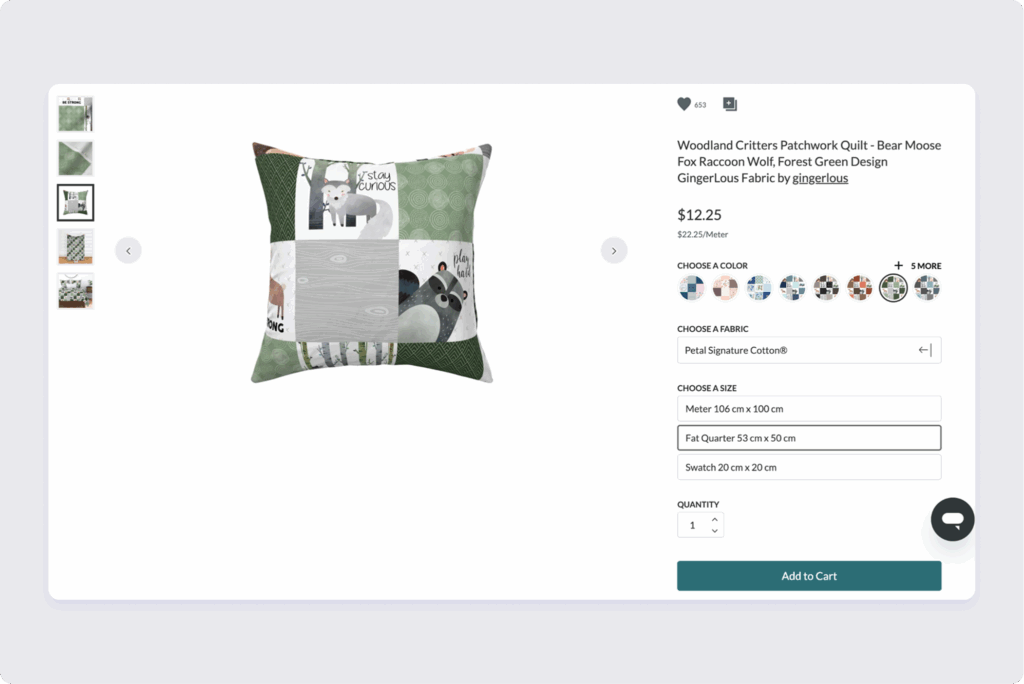
Use a Custom Price Calculator for Fractional Yard Orders
For truly flexible fabric selling, implement a Custom Price Calculator app on your Shopify store.
This essential tool allows customers to enter exact measurements (like 1.75 yards) and instantly see accurate pricing. Furthermore, the calculator can handle complex pricing structures, including quantity discounts or surcharges for small cuts.
Customers appreciate the transparency of real-time price calculations when ordering precisely the amount of fabric they need for their projects.
Communicate Minimum Order Requirements
Clear minimum order policies are crucial when you sell fabric on Shopify. Prominently display your minimum cut length (typically 0.25 or 0.5 yards) on product pages and in your shop policies.
Therefore, customers understand your limitations before placing orders. Use your Custom Price Calculator to enforce these minimums automatically. For specialty or expensive fabrics, consider setting product-specific minimums that reflect your costs and fabric value, ensuring each transaction remains profitable while meeting customer expectations.
Let Customers Choose Fabric Lengths and Colors
Successful Shopify fabric stores offer personalization options that traditional retailers can’t match. When you sell fabric on Shopify with a Custom Price Calculator, customers can specify exact measurements—whether in yards, meters, or even inches.
Use dropdown menus for colorways when a fabric comes in multiple options. For printed fabrics, consider offering directional cutting options (railroaded or standard) to accommodate specific project needs. The more control you give customers over their fabric purchases, the more likely they are to complete the checkout process.
Optimize Your Fabric Listings for SEO
If you want your fabric store to stand out on Shopify, your product listings need to be more than just pretty pictures. Good SEO helps people find your fabrics when they search online—and that means more clicks, more traffic, and more sales. Here’s how to do it right.
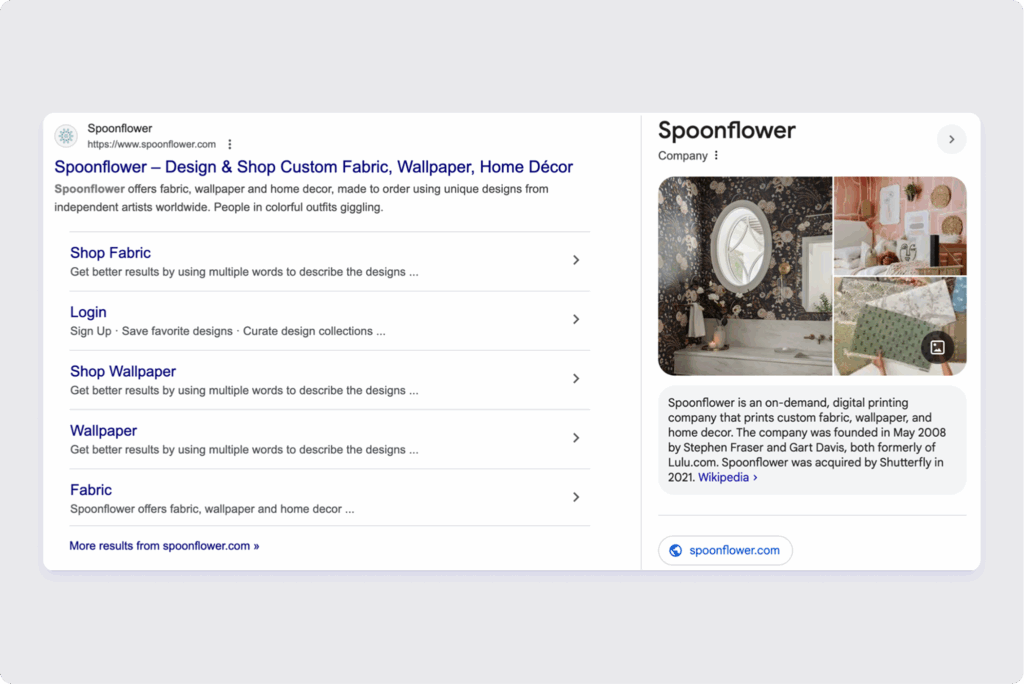
Use Clear Product Titles Like “Floral Cotton Fabric by the Yard”
Your product title is one of the most important places to include keywords. Be clear, not clever. Instead of vague names like “Sunshine Dreams,” use a title like “Floral Cotton Fabric by the Yard – Yellow & White Print.” Think about what your customers are typing into Google: fabric type, color, and unit of measurement. That’s what your title should include.
Add ALT Text for Product Images
Google can’t see your images—but it can read your image ALT text. This is where you describe the fabric shown in each photo. Use short, descriptive phrases like “blue linen fabric folded on table” or “close-up of red plaid cotton fabric.” ALT text helps with SEO and makes your store more accessible to all users.
Write Unique Product Descriptions with Keywords
Avoid copying descriptions from suppliers or using the same text on every listing. Instead, write a short, original paragraph that includes important keywords like “cotton fabric,” “by the yard,” or “quilting fabric.” Mention the fabric’s texture, weight, ideal uses, and washing instructions. You don’t need to overthink it—just describe the fabric the way you’d talk to a customer in person.
Fabric Shipping and Inventory Tips
Here are two quick wins to help you ship smarter and stay organized.
Use Lightweight Packaging to Save on Costs
Fabric can be bulky, but it’s usually not heavy—so use that to your advantage. Choose lightweight, flexible packaging like poly mailers or tissue-wrapped bundles in kraft envelopes. This keeps shipping costs low, especially for domestic orders.
Avoid large boxes unless necessary, and always compare shipping rates between carriers. If you sell fabric by the yard, make sure your packaging fits common order sizes (like 1–3 yards or 5+ yards) so you’re not wasting space—or money.
Branded packaging adds a professional touch without adding much weight.
Track Inventory with Shopify’s Built-In Tools
It’s easy to lose track of how many yards of fabric you’ve sold—especially if you offer fractional yard orders. Shopify’s inventory tools let you track fabric stock in real-time, so you never oversell or run out without knowing.
You can set up inventory alerts, view sales trends, and even see which fabrics are most popular. This helps you reorder at the right time and focus on what sells best.
If you sell by yard, meter, or other custom lengths, pair Shopify with an Apippa Custom Price Calculator app to keep orders and inventory aligned perfectly.
Grow Your Audience and Sales
Promote New Fabrics via Email Marketing
Email is still one of the most effective ways to connect with your customers. Use it to announce new fabric arrivals, restocks, seasonal collections, or sales. Add value with quick project ideas or sewing tips to keep readers engaged.
Make sure you segment your list—quilters might be interested in different fabrics than apparel makers. Use clear subject lines like “Just In: Organic Cotton Prints by the Yard” or “5 Yards Left! Shop Bestselling Linen Before It’s Gone.”
A simple newsletter once a week or twice a month keeps your brand top of mind.
Use Pinterest, TikTok, and Instagram to Show Fabric in Use
Your audience wants to see what your fabrics can become. Share short videos, swatch reels, behind-the-scenes shots, or customer makes on platforms like Instagram, TikTok, and Pinterest. These platforms are visual, perfect for showing texture, drape, and color.
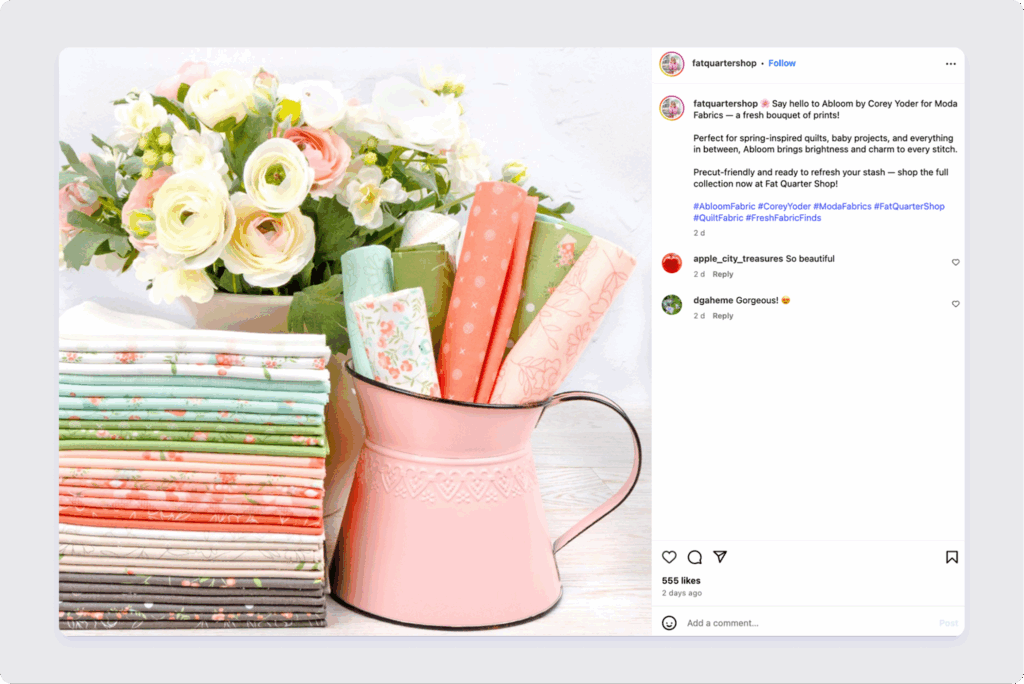
Use relevant hashtags like #sewistsofinstagram or #quiltingcotton to reach niche audiences. Tag designers, sewing influencers, or customers (with permission) to build engagement.
Pinterest is great for evergreen content—pin your product listings and link directly back to your store.
Collaborate with Sewists and Pattern Designers
One of the best ways to grow your reach is by working with sewists, quilters, and indie pattern designers. Offer fabric in exchange for a feature, tutorial, or styled shoot. Their audience gets inspired, and you gain exposure.
Choose collaborators who align with your brand—whether it’s bold prints, sustainable materials, or garment-friendly fabrics. These partnerships build credibility and help your fabric get seen in action, not just folded on a shelf.
Tools to Make Selling Fabric Easier on Shopify
Why You Should Use a Custom Price Calculator App
Apippa Custom Price Calculator is a must-have if you sell fabric by the yard, meter, or any custom length. Shopify’s default settings aren’t built for fractional units or dynamic pricing—but this app fills that gap.
With the Custom Price Calculator, customers can enter the exact amount of fabric they want, and the price updates automatically. This not only improves the buying experience but also reduces errors and manual order adjustments.
It’s perfect for shops selling fabric rolls, bolts, or custom cuts. Plus, it integrates seamlessly with your Shopify store and saves hours of setup time.
Start Selling Fabric on Shopify Today
The online fabric market is growing—and there’s room for creative, well-run shops to stand out. With the right setup and smart tools, you can turn your fabric passion into a thriving business.
Focus on SEO, streamline your pricing and inventory, and use platforms like email and social media to grow your audience.
Ready to make your store easier to run and easier to shop?
👉 Get started with the Custom Price Calculator app and see how simple it can be to sell fabric on Shopify.
